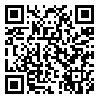1. Poulin JM, Bigford GE, Lanctôt KL, Giacobbe P, Schaffer A, Sinyor M, et al. Engaging mood brain circuits with psilocybin (EMBRACE): a study protocol for a randomized, placebo–controlled and delayed–start, neuroimaging trial in depression. Trials. 2024;25(1):441. [
DOI]
2. Lindh ÅU, Waern M, Beckman K, Renberg ES, Dahlin M, Runeson B. Short term risk of non-fatal and fatal suicidal behaviours: the predictive validity of the Columbia–suicide severity rating scale in a Swedish adult psychiatric population with a recent episode of self–harm. BMC Psychiatry. 2018;18(1):319. [
DOI]
3. World Health Organization. Suicide worldwide in 2021: global health estimates [Internet]. World Health Organization; 2025 [cited 2025 May 10]. Available from: [
Article]
4. Kanani J, Sheikh MI. Temporal patterns of suicide attempts in India: a comprehensive analysis by time of day, week, and hour, stratified by age, sex, and marital status, and examining suicidal methods distribution. Brain Behavior and Immunity Integrative. 2024;7:100072. [
DOI]
5. Jakobsen SG, Nielsen T, Larsen CP, Andersen PT, Lauritsen J, Stenager E, et al. Definitions and incidence rates of self–harm and suicide attempts in Europe: A scoping review. J Psychiatr Res. 2023;164:28–36. [
DOI]
6. Mivehyan M. Investigating suicidal suicide factors in Kermanshah province. Journal of Civil & Legal Sciences. 2017;3(3):99–117. [Persian]
7. Arab A, Zaraatkar Makki M, Eftekhari Konzarki F, Afsharpour P. Prediction of suicidal thoughts based on the difficulty of emotion regulation and perceived social support in high school students. Journal of Psychology New Ideas. 2024;20(24):1–13. [Persian] [
Article]
8. Asadiyun M, Daliri S. Suicide attempt and suicide death in Iran: a systematic review and meta–analysis study. Iran J Psychiatry. 2023;18(2):191–212. [
DOI]
9. Bromand N, Naziryy G, Davodi A, Fath N. Comparison of the effectiveness of the suicide prevention training program (ASSIP) on cognitive reactivity, suicidal thoughts and social health in repeat suicide attempters. Iranian Journal of Nursing Research. 2023;17(6):43–55. [Persian] [
DOI]
10. Moradi R, Modabernezhad A. The effect of religiosity, socio–economic status change and social support on suicidal ideation among high school female students in Boyer–Ahmad city. Hakim Journal. 2020;23(3):332–43. [Persian] [
Article]
11. Kusuma K, Larsen M, Quiroz JC, Torok M. Age–stratified predictions of suicide attempts using machine learning in middle and late adolescence. J Affect Disord. 2024;365:126–33. [
DOI]
12. Salvi J. Calculated decisions: columbia–suicide severity rating scale (C–SSRS). Emerg Med Pract. 2019;21(5):CD3–4.
13. Riera–Serra P, Navarra–Ventura G, Castro A, Gili M, Salazar–Cedillo A, Ricci–Cabello I, et al. Clinical predictors of suicidal ideation, suicide attempts and suicide death in depressive disorder: a systematic review and meta–analysis. Eur Arch Psychiatry Clin Neurosci. 2024;274(7):1543–63. [
DOI]
14. Khodabandehlou S, Hashemi Golpayegani SA. How do abnormal trading behaviors diffuse in electronic markets? Soc Netw Anal Min. 2024;14(1):98. [
DOI]
15. Joiner Jr. TE, Van Orden KA, Witte TK, Rudd MD. The interpersonal theory of suicide: guidance for working with suicidal clients. Washington, DC, US: American Psychological Association; 2009. [
DOI]
16. O'Connor RC, Nock MK. The psychology of suicidal behaviour. Lancet Psychiatry. 2014;1(1):73–85. [
DOI]
17. Lee J, Kim D, Lee WJ, Woo SH, Jeong S, Kim SH. Association of the COVID–19 pandemic and low–rescue suicide attempts in patients visiting the emergency department after attempting suicide. J Korean Med Sci. 2021;36(34):e243. [
DOI]
18. Kang M, Kim H. Unique characteristics that distinguish suicide attempters from patients with nonsuicidal self–injury admitted to the emergency department following self–harm behavior: Psychological scales and biochemical markers. Turk J Emerg Med. 2021;21(2):62–8. [
DOI]
19. Beck AT, Schuyler D, Herman I. Development of suicidal intent scales. In: The prediction of suicide. Oxford, England: Charles Press Publishers; 1974.
20. Posner K, Brown GK, Stanley B, Brent DA, Yershova KV, Oquendo MA, et al. The Columbia-Suicide Severity Rating Scale: initial validity and internal consistency findings from three multisite studies with adolescents and adults. Am J Psychiatry. 2011;168(12):1266–77. [
DOI]
21. Ghasemi P, Shaghaghi A, Allahverdipour H. Measurement scales of suicidal ideation and attitudes: a systematic review article. Health Promot Perspect. 2015;5(3):156–68. [
DOI]
22. Patton MQ. Qualitative research & evaluation methods. 3rd ed. Thousand Oaks: SAGE Publications, Inc; 2002.
23. Beck AT, Kovacs M, Weissman A. Assessment of suicidal intention: the scale for suicide ideation. J Consult Clin Psychol. 1979;47(2):343–52. [
DOI]
24. Beck AT, Steer RA, Brown GK. Beck Depression Inventory (BDI-II). Pearson; 1996. [
DOI]
25. Anisi J, Fathi Ashtiani A, Salimi S, Ahmadi Noudeh K. Validity and reliability of Beck suicide scale ideation among soldiers. Journal of Military Medicine. 2005;7(1):33–7. [Persian]
26. D'Angelo M, Steardo L Jr. Understanding internalized stigma's role in sex-specific suicidal ideation among individuals with bipolar disorder. J Clin Med. 2024;13(14):4000. [
DOI]
27. Hatkevich C, Penner F, Sharp C. Difficulties in emotion regulation and suicide ideation and attempt in adolescent inpatients. Psychiatry Res. 2019;271:230–8. [
DOI]
28. Kar N, Arun M, Mohanty MK, Bastia BK. Scale for assessment of lethality of suicide attempt. Indian J Psychiatry. 2014;56(4):337–43. [
DOI]
29. Nobile B, Olié E, Dubois J, Benramdane M, Guillaume S, Courtet P. Characterization of suicidal depression: a one–year prospective study. Eur Psychiatry. 2022;65(1):1–40. [
DOI]
30. Misson H, Mathieu F, Jollant F, Yon L, Guillaume S, Parmentier C, et al. Factor analyses of the suicidal intent scale (SIS) and the risk–rescue rating scale (RRRS): toward the identification of homogeneous subgroups of suicidal behaviors. J Affect Disord. 2010;121(1–2):80–7. [
DOI]
31. Sheehan DV, Alphs LD, Mao L, Li Q, May RS, Bruer EH, et al. Comparative validation of the S–STS, the ISST–Plus, and the C–SSRS for assessing the suicidal thinking and behavior FDA 2012 suicidality categories. Innov Clin Neurosci. 2014;11(9–10):32–46. 1.
32. Kim HJ, Lee DH. Predictive factors for the medical hospitalisation of patients who visited the emergency department with suicide attempt. BMC Psychiatry. 2021;21(1):79. [
DOI]
33. Durkheim E. Le suicide: étude de sociologie. Paris: Félix Alcan; 1897.
34. Zivari–Rahman M, Ghanbari S, Shokouhi–Moghadam S. Psychometric properties of the youth pornography addiction screening tool. Addict Health. 2021;13(4):207–20. [
DOI]
35. Giddens JM, Sheehan KH, Sheehan DV. The Columbia–suicide severity rating scale (C–SSRS): has the "gold standard" become a liability? Innov Clin Neurosci. 2014 Sep;11(9–10):66–80.





